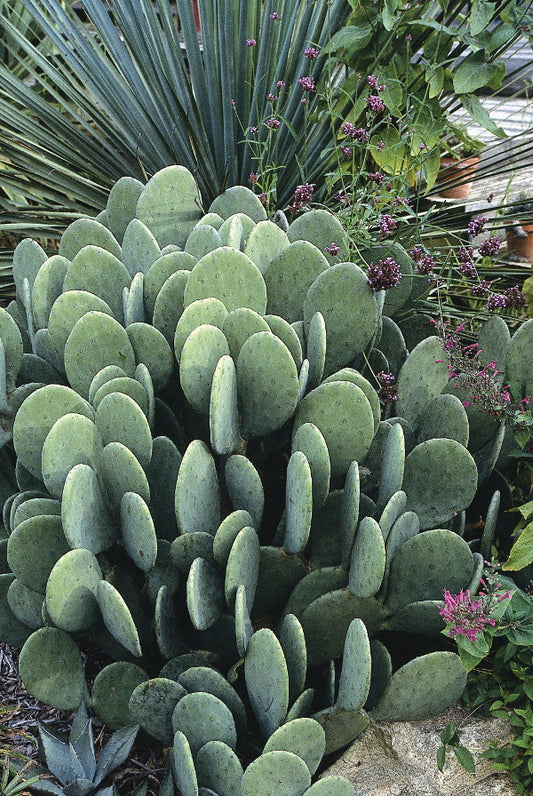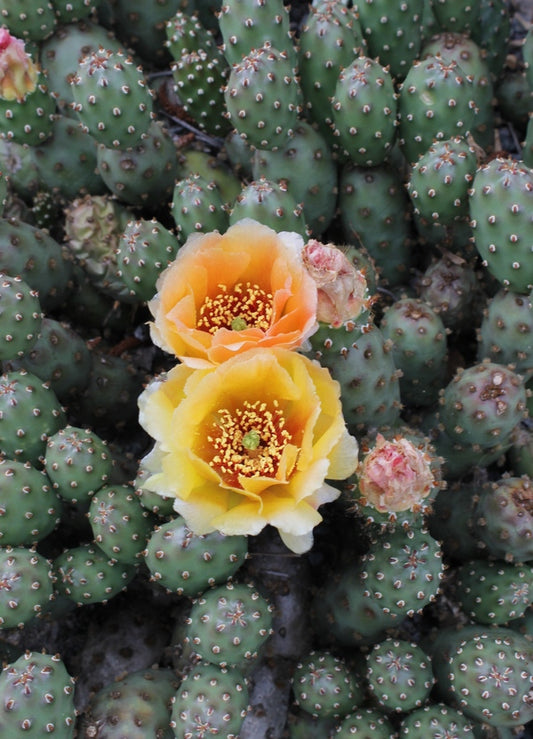Opuntia (Prickly Pear Cactus) species have a distinctive look, with flat pads, beautiful, large flowers and fig-sized, maroon fruits. Both the fruits and the young pads are edible provided that you carefully remove all of the thorns and hairs.
-
 Sold out
Sold outOpuntia cacanapa 'Ellisiana'
Item #: 5564
Zones: 7a to 10b, possibly colder
Dormancy: Evergreen
Height: 36" tall
Culture: Sun
Origin: United States Hybrid
Pot Size: 3.5" pot (24 fl. oz/0.7 L)
Regular price $25.00Regular priceUnit price per -
Opuntia fragilis 'Potato'
Item #: 14256
Zones: 4a to 8b, at least
Dormancy: Evergreen
Height: 3" tall
Culture: Sun
Origin: United States
Pot Size: 3.5" pot (24 fl. oz/0.7 L)
Regular price $25.00Regular priceUnit price per
More Information About Opuntia
Opuntia is a rather large genus of Cactaceae, the cactus family, containing more than 90 succulent species native to the deserts of the Americas. They are amazingly adaptable and can be found native in almost every US state and Canada.
Opuntia species have a distinctive look, with flat pads (phylloclades), beautiful, large flowers and fig-sized, maroon fruits. Both the fruits and the young pads are edible provided that you carefully remove all of the thorns and glochids (small spiny hairs). Some people also use opuntia sap as a hair conditioner. How ironic to get rid of dry "cactus hair" by putting cactus in your hair!
Some of the more popular Opuntia cultivars are seemingly spineless but are still armed. There are two types of barbed protrusions on Opuntia: the large spines that you can see and the tiny, hair-like barbs called glochids. Spineless ones still have at least a few glochids which can get under your skin and are very irritating. This trait also makes Opuntia deer-resistant.
Tips for Growing and Caring for Opuntia (Prickly Pear Cactus)
Prickly pear cactus prefers to grow in full sun and very well-drained soil, as it has no tolerance of wet feet, especially in winter. They are also salt-tolerant plants. The amazing flowers attract bumblebees, butterflies and hummingbirds. Opuntia is a tough group of plants and quite drought-tolerant. Try growing in a Southwest-themed garden, rock garden or intermix it with fine textured perennials such as coreopsis, amsonia, or penstemon.
Check out our in depth article on Cacti for the Southeast.




